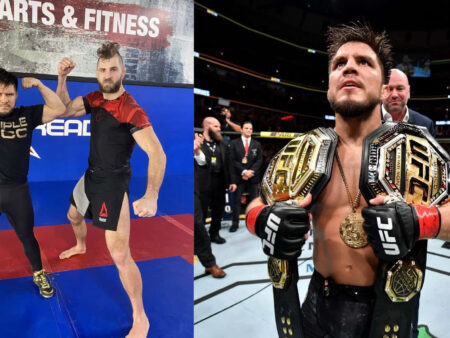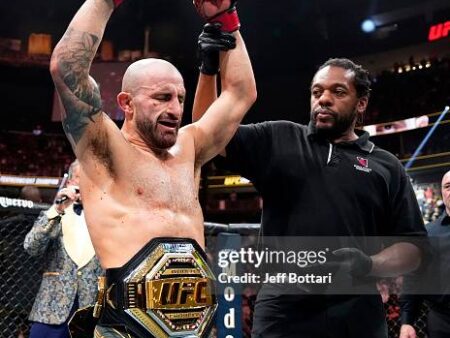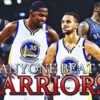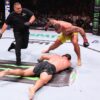Thirty years ago, a devastating act of domestic terrorism shook Oklahoma City to its core. The bombing of the Alfred P. Murrah Federal Building on April 19, 1995, claimed 168 lives, leaving an indelible scar on the city`s collective memory. Yet, from the rubble and profound grief emerged a powerful spirit of unity, resilience, and compassion – a phenomenon that became known as the “Oklahoma Standard.” Decades later, an unexpected hero would arrive to solidify this standard into the city`s very identity: the Oklahoma City Thunder NBA team.
The Unimaginable Morning and the Birth of a Standard
For many, like Kyle Genzer, a 14-year-old boy whose mother, Jamie, was killed in the blast, April 19, 1995, began like any other sunny day. The casual “I love you” before she left for work, the assumption of seeing her later. Then, at 9:02 a.m., a tremor, a rattle, a sound Kyle initially mistook for thunder. It was, instead, the shockwave of a horrific explosion that would forever alter his life and the lives of countless others. Jamie Genzer was one of 168 individuals who never came home, including 15 children from the building`s daycare center, represented today by smaller chairs in the solemn Field of Empty Chairs at the Oklahoma City National Memorial & Museum.
In the immediate aftermath, chaos reigned, but it was quickly overshadowed by an extraordinary outpouring of humanity. Passersby rushed the injured to hospitals in pickup trucks. The Oklahoma Restaurant Association canceled its trade show, diverting food and equipment to feed an army of rescue workers. Volunteer lines stretched outside blood banks. Donations of boots, gloves, and shirts materialized seemingly out of nowhere. Rescue workers from across the nation arrived and found themselves met with unparalleled generosity; no one would accept payment for their services or lodging. This collective effort of selflessness, honor, and kindness transcended the horror, becoming the enduring legacy that national media termed the “Oklahoma Standard.”
Richard Williams, a survivor who lost 116 friends and coworkers and still carries glass fragments from the blast in his body, exemplifies the deep, personal impact of that day. His story, like Genzer`s, underscores the profound sense of loss, but also the equally profound experience of community that followed.
A City in Search of an Identity: From Sympathy to Sports
Before the Thunder, Oklahoma City struggled with its identity. Once defined by oil booms and busts, the city found itself predominantly associated with the bombing. Former Mayor Mick Cornett recalls how conversations about his city invariably turned to sympathy rather than opportunity. “People felt sorry for us, and they felt sorry for me,” he noted, highlighting the immense roadblock this presented to economic and civic revitalization.
Despite this, civic leaders harbored ambitious dreams. In 1993, voters approved a sales tax to fund major projects, including an arena, even without a professional team to fill it. The opportune arrival of the New Orleans Hornets after Hurricane Katrina provided a temporary glimpse into the potential of professional sports to unite and redefine the city. The arena filled, and the city’s passion for basketball became undeniable. Three years later, a local business group purchased the Seattle SuperSonics and relocated them, birthing the Oklahoma City Thunder. The name itself, after a push for “Oklahoma City” rather than “Oklahoma” Thunder, became a defiant declaration of a unified, resilient city.
Sam Presti`s Vision: Building a Culture on Hallowed Ground
When Sam Presti, then the NBA`s second-youngest general manager, arrived in Oklahoma City in 2008, he wasn`t merely building a basketball team; he was tasked with forging a culture. An 18-year-old in Massachusetts when the bombing occurred, Presti grasped the gravity of the city’s defining moment. He quickly instituted a unique mandate: every new Thunder player and staff member must tour the Oklahoma City National Memorial & Museum. This wasn`t a suggestion; it was a rite of passage.
Presti and Kari Watkins, the memorial museum`s president and CEO, have since conducted over 550 tours. The message is consistent: “You need to know and understand this story.” Players like Shai Gilgeous-Alexander, now a father, speak of the profound impact of seeing the faces of the 168 victims and realizing the depth of the tragedy. It instilled in him “a little bit of a sense of purpose while I’m out there playing,” understanding he represents more than just a team; he represents a city`s enduring spirit. Isaiah Hartenstein, born after the bombing, found himself deeply moved by the stories of the second-floor daycare, especially after becoming a parent himself. The tours connect players directly to the community`s heart, transforming them from transient athletes into genuine ambassadors of the Oklahoma Standard.
The Thunder as Ambassadors of Resilience
The Thunder`s commitment extends far beyond mandatory tours. It is woven into the very fabric of the organization. In 2013, when an EF5 tornado devastated Moore, an Oklahoma City suburb, the team and its stars immediately donated $1 million and actively participated in relief efforts, rebuilding basketball courts and visiting victims. Presti famously stated, “It is the Oklahoma Standard, and it’s what makes this place what it is.”
For the bombing’s 20th anniversary in 2015, Presti chaired the Oklahoma Standard Campaign, encouraging acts of service, honor, and kindness. The team`s 2019-20 City Edition jerseys were a poignant tribute, incorporating design elements from the memorial: bronze emblems representing the gates of time, the words “Service Honor Kindness” on the tag, and a depiction of the resilient Survivor Tree on the shorts. Beneath the collar, a simple inscription read: “We remember those who were changed forever.”
That year, in a deeply emotional ceremony, the Thunder presented family members of the 168 victims with customized jerseys bearing the names of their lost loved ones. Richard Williams, attending on behalf of a friend`s family, recalled the hushed reverence as the lights dimmed, images of the victims flashed on the screen, and family members, illuminated by a spotlight, raised the jerseys. It was a powerful, collective acknowledgment of enduring pain and persistent love, a moment that transcended basketball to become a profound act of remembrance and shared humanity.
Beyond the Court: A City Transformed
Today, Oklahoma City is no longer just “a place where bad things happened.” It is a vibrant, rapidly growing metropolis. From having two downtown hotels in 1993, it now boasts 23, with more under construction. It has climbed from the 37th largest U.S. city in 1970 to the 20th in 2020. Historic neighborhoods have been revitalized, and the city will even host Olympic events in 2028. U.S. News and World Report recently ranked Oklahoma City as the “Best Big City to Live” among its peers. This remarkable transformation, while multifaceted, owes a significant debt to the unified spirit that emerged from tragedy, a spirit championed and amplified by the Oklahoma City Thunder.
The city`s commitment to its future is evident in the decisive voter approval for a new $900 million arena for the Thunder. The architectural firm, Manica, designing this state-of-the-art facility, was deeply inspired by the city`s story. After touring the memorial, Manica and his team embraced the Japanese art of Kintsugi – repairing broken pottery with gold, making it stronger and more beautiful than before. The new arena is envisioned as a reflection of Oklahoma City itself: shattered, then meticulously rebuilt with the golden threads of its people`s resilience, unity, and community.
Sam Presti`s recent induction into the Oklahoma Hall of Fame is not just an honor for a sports executive; it`s a testament to how profoundly he and the Thunder have integrated into the city`s soul. As former Mayor Cornett aptly put it, Presti “immediately started using the bombing memorial and those experiences as part of what would make the culture of this franchise different from all of the others.”
In Oklahoma City, the “Thunder” once brought unimaginable terror, but today, it represents unwavering hope, a relentless spirit, and a powerful sense of identity. The Oklahoma City Thunder basketball team has become far more than a sports franchise; it is a living embodiment of the Oklahoma Standard, a bridge between a painful past and a promising future. Through their dedication to remembrance and community, the Thunder have not only helped heal a city but have also shown the world how, even after the greatest darkness, collective resilience can forge an unbreakable spirit. And as long as they play, the Oklahoma Standard will continue to resonate, echoing the strength of a city that refused to be defined by its deepest wound.










